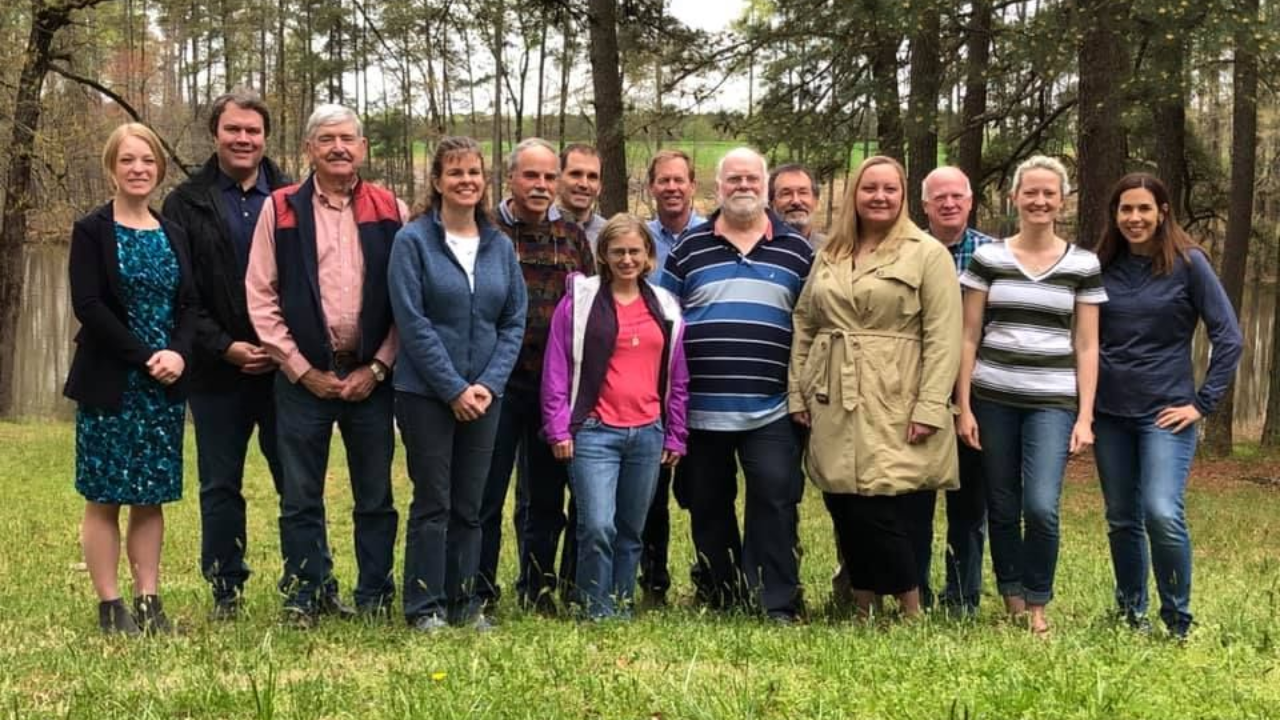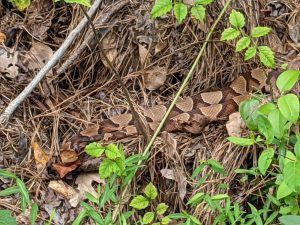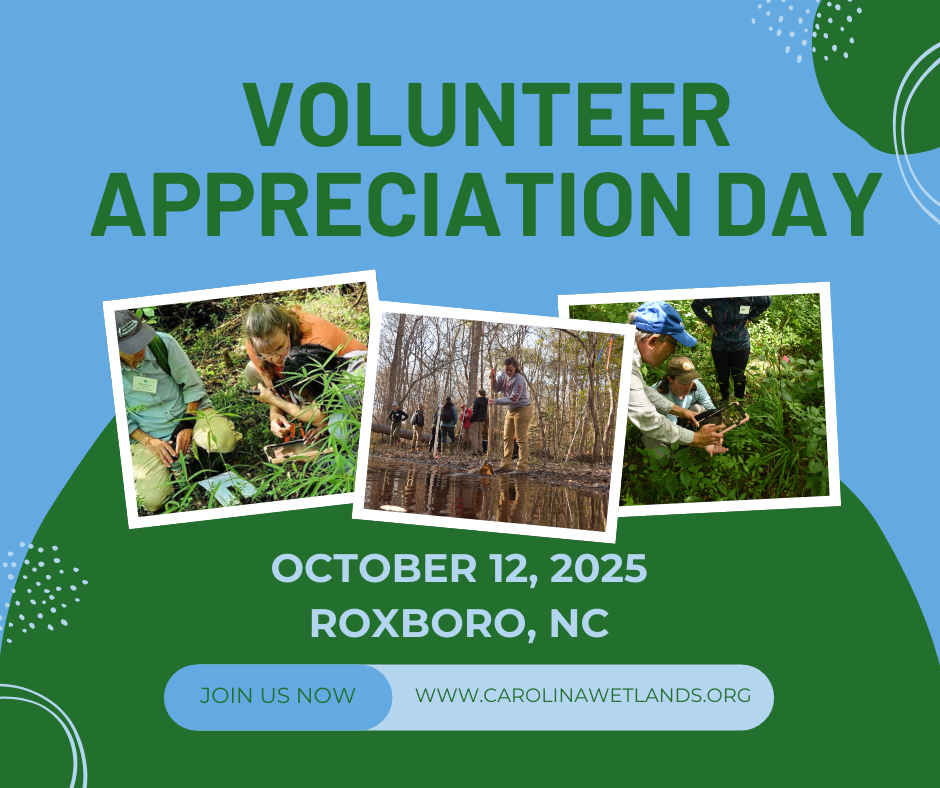VWMP COMPLETES THIRD ROUND OF WETLAND MONITORING
The September monitoring outings for the Volunteer Wetlands Monitoring Program (VWMP) were a great success. Seven program veteran volunteers as well as two new volunteers joined us over the weekend. We were concerned about the forecast for this outdoor field work but we were very lucky to only have some light rain on day one and the threat of potential thunderstorms on day two never materialized, thankfully.

Volunteer Tom Schwarcz earns his Carolina Wetlands Association cap for volunteering over 25 hours to the VWMP.
WATER SAMPLING
Our monitoring outings at each site this time out was kicked off with water monitoring working with our NC State University water team headed up by Dr. Mike Burchell and graduate student, Molly Landon.
We observed that even with some recent heavy rainfall, the hot and dry summer left some of our wetland sites without any standing water to sample. Water samples and well data were taken by our now very skillful volunteers and we are starting to see how this type of activity might be scaled if this program is expanded in the future
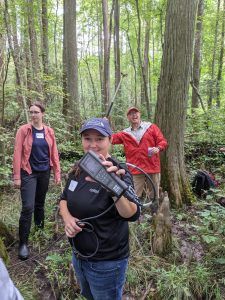
Dr. Mike Burchell, Mattie Frazier and Megan Dunn take the new YSI meter out for it's maiden voyage.
Plant Communities
Once a year we are tasked with filling out surveys on the plant communities and the invasive non-native plant species we’re finding in our study areas.
Plant communities are groups of plants sharing a common environment that interact with each other, animal populations, and the physical environment. This helps us understand the bigger picture of the health of the wetlands we’re studying. We used Wildnote to log this information and look forward to sharing this data in the near future.
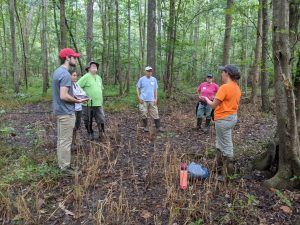
Amanda Johnson works with volunteers on assessing the plant communities at Mason Farm.
Invasive Species Monitoring
We also recorded plant life in our study wetlands that are non-native, invasive species. Invasive plant species spread quickly and can displace native plants, prevent native plant growth, and create monocultures.
The participants in the VWMP do not remove those plants since they are part of our study area. However, it’s a common activity for organizations and volunteers to strategically remove these plants to restore a natural environment back to healthy and diverse native plant communities.
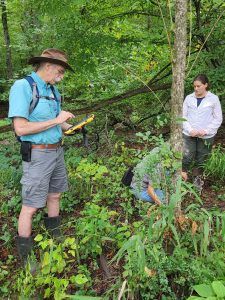
Ace, Chase and Mickey Jo record non-native plants in the area around the marsh at Mason Farm.
Wildlife Observations
We did not perform an amphibian survey as part of this quarter’s monitoring event, but we did record sightings of the wildlife we saw in iNaturalist in the VWMP Project.
We found several frogs, a male box turtle and a Green Heron watched over us as we worked at the Mason Farm marsh. Even though not officially in one of our study sites, pictured is our siting of one of North Carolina’s most feared but beautiful snakes, the copperhead.
You can see all of our observations by clicking HERE.
Check out the Facebook posts HERE and HERE about this event.
Visit the Volunteer Resource Page for more information on the Volunteer Wetland Monitoring Program.
You might also like
